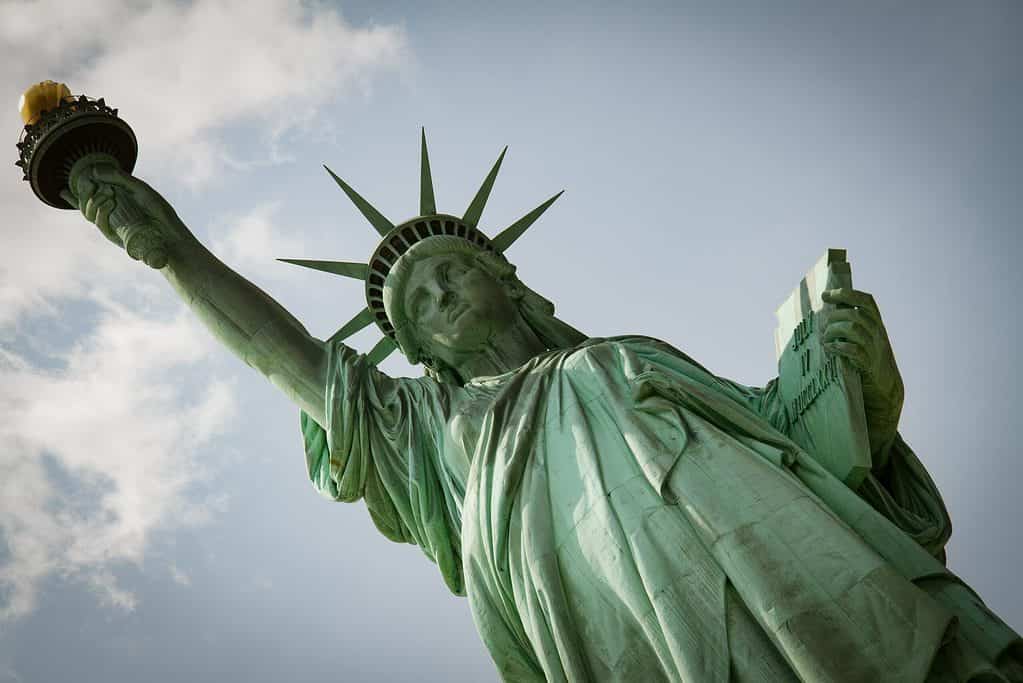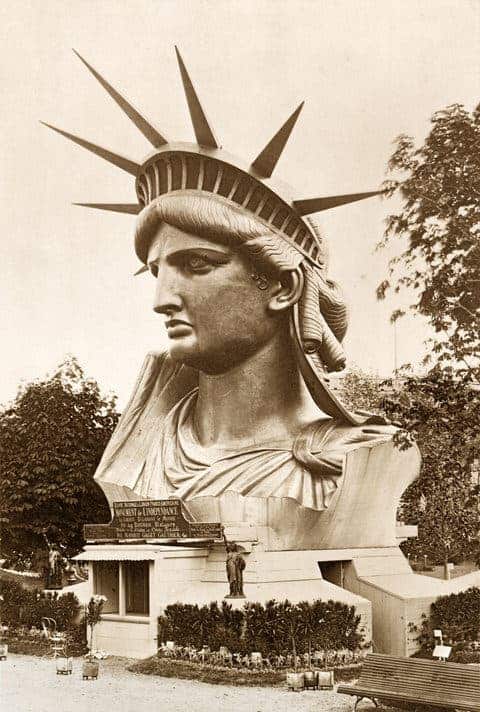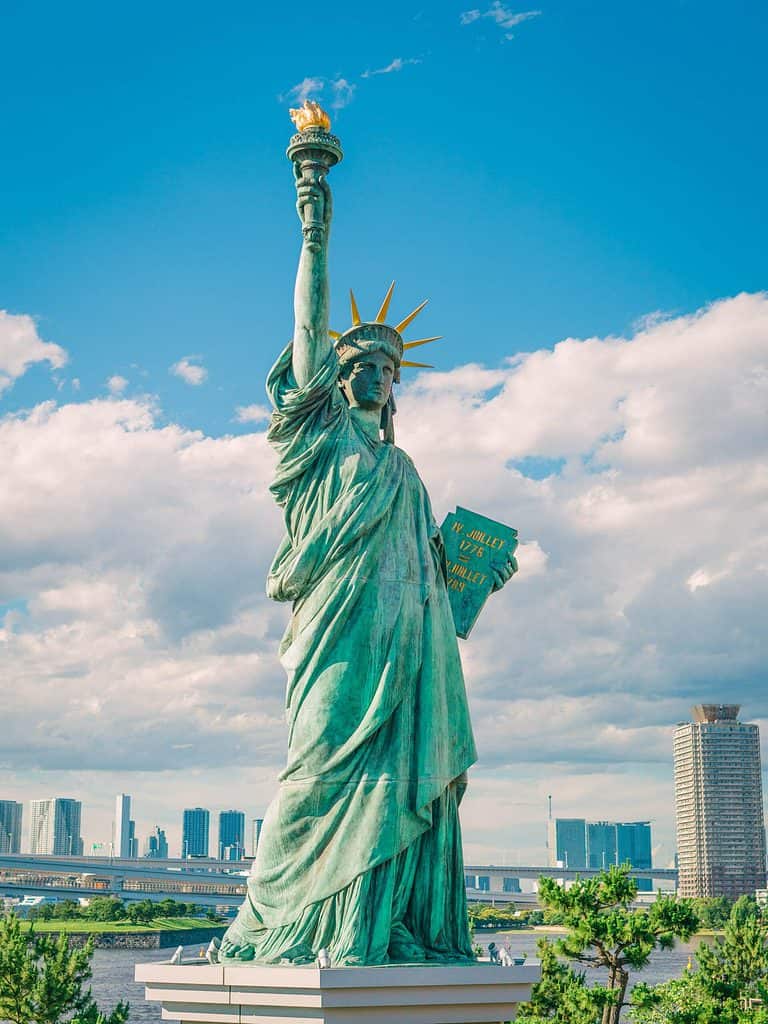
The Statue of Liberty, a symbol of freedom and democracy, stands tall on the shores of New York City. The robed woman holding a torch and a tablet inscribed with the date of the Declaration of Independence (“July 4, 1776”) is instantly recognizable and has become one of the most iconic statues in the world. But besides its towering presence, one of the first things that tourists notice is the statue’s green hue. Some might think this is just another color choice, but the true reason for its color is rooted in science.
When the Statue of Liberty first arrived in New York Harbor to great fanfare on June 17, 1886, it was actually reddish-orange — the natural color of the copper sheets that comprise the statue’s outer ‘skin’. But by 1906, the statue attained its current blue-green tint, known as “verdigris”, as a result of the chemical reaction between copper and the oxygen in the air, a process known as oxidation that, in this case, leads to the formation of copper oxide.
Tracing the history of the statue’s color from shiny copper to verdigris green
Standing tall at 151 feet (46 meters), the statue was designed by French sculptor Frédéric Bartholdi, while Gustave Eiffel, the same man who built the Eiffel Tower in Paris, was responsible for the steel framework. In fact, the statue was a gift from France, whose late 19th-century government wanted to celebrate the friendship between the French and American people, as well as pay homage to the young nation’s success in building a viable democracy. While France was responsible for building and assembling the statue, the U.S. built the pedestal for the statue inside the courtyard of Ford Wood, a fortress built for the War of 1812 against Britain and its allies on Bedloe’s Island, now called Liberty Island.

The plan was to have the statue ready to be shipped off to the U.S. by 1876, in time for the centennial of the Declaration of Independence. But the project was delayed due to funding issues. Finally, Bartholdi completed the statue in 1885 using hundreds of thin copper sheets to cover the inner steel framework, which was shipped in more than 200 crates to New York aboard the French frigate Isere. The architects chose to wrap the statue in multiple layers of copper so that the monument could withstand and dynamically adapt to challenging variations in temperature and wind. Over four grueling months, workers reassembled the statue and mounted it on the pedestal, which effectively doubled the reach of Lady Liberty to 305 feet (93 meters), measured from the base of the pedestal to the tip of the torch.
Looming above New York Harbor, the Statue of Liberty was the first thing millions of immigrants saw on their way to processing on Ellis island. A commemorative plaque at the entrance to the statue’s pedestal welcomed them, which is engraved with a sonnet called “The New Colossus” written in 1883 by Emma Lazarus. Its most famous passage reads:
Give me your tired, your poor
Your huddled masses yearning to breathe free
The wretched refuse of your teeming shore
Send these, the homeless, tempest-tost to me
I lift my lamp beside the golden door!
However, later waves of immigrants seeking a new life in the United States were welcomed to a different picture of the statue, which turned from a dull reddish brown into a matt verdigris. This is due to the natural oxidation of the outer copper skin of the statue — but there’s a bit more to it.
The outer copper shell actually went through various kinds of oxidation events which together led to a unique finish. A combination of oxygen, rain, and sea spray, but also air pollution, all combined to produce the famous blue-green coat.
At first, copper reacted with oxygen from the air in an oxidation-reduction (redox) reaction, forming cuprous oxide (Cu2O), or cuprite. That’s not news to most people. However, the pinkish-red cuprous oxide can be reduced further by oxygen to form cupric oxide (CuO), which is black in color. But that’s not all.
During the early 20th century, New York City suffered from a lot of air pollution, so the Statue of Liberty was exposed to a lot of particulate matter, but also sulfur compounds produced by burning coal. The sulfur dioxide reacted with the copper skin, producing copper sulfide minerals, which in turn reacted with carbon dioxide in the air and hydroxide ions from the water vapor forming various copper carbonate minerals that are green and blue in color. The resulting thin layer of oxidized copper is known as a patina.
Patina forms on all bronze objects, including coins. Copper coins are initially shiny but quickly turn a dull greenish-grey color due to oxidation. Here’s a quick science experiment you can try to see this in action:
- Mix salt and vinegar. You’ll form a solution of sodium acetate and hydrogen chloride. The latter is a strong acid that will remove oxide from metal surfaces.
- Dip just half of a copper coin inside the solution for a few minutes.
- Pull the coin out and you notice that the side that was immersed in the solution is now shiny while the untreated half is dull.
- That’s not all. Leave the treated coin out in the open for a few days and you should notice the formation of a patina layer.
More than just a pretty color: the practical purpose of the verdigris coating

Some might think that the statue’s verdigris is a sign of decay or deterioration, but in reality, they couldn’t be further from the truth. The patina coat on the Statue of Liberty actually protects the many other copper sheets underneath from environmental damage. Without this protective layer, the statue’s copper skin would continue to react with the air and water, eventually weakening and deteriorating.
So this protective layer is essential in preserving the statue and ensuring that it continues to stand tall as a symbol of freedom and democracy.
In conclusion, the Statue of Liberty’s green color is not just a random choice, but rather a result of a chemical reaction between copper and the elements. The verdigris hue not only contributes to the Statue of Liberty’s iconic look but also serves as a testament to the enduring symbol of freedom it represents.



